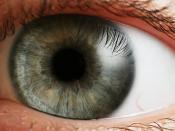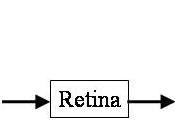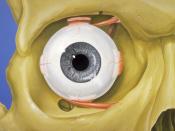The purpose of this research project is to investigate and report researched information on ophthalmology. According to the Encyclopedia Britannica "the eye is the organ through which persons acquire knowledge of their environment by virtue of the light reflected from, or emitted by, the objects within the environment; it is the photo receptor organ that, together with other types of receptors, allows the organism react to and to understand the world around it."1 First, human sight will be explained, including the structure of the human eye and the entire process of how we see from when light comes towards our eyes until and including the brain's interpretation. Second, defects of the eye and corrective procedures that include farsightedness, nearsightedness, astigmatism, LASIK surgery and corrective lenses will be discussed. Also, discussion of optical equipment used to examine, care for and the corrective treatment of eyes will be included. Third, the effects of a variety of drugs, prescribed, legal and illegal, on the human eye and eyesight will be discussed.
The process of human sight is complex. Light enters through the clear covering of the eye called the cornea. It then passes through the adjustable opening in the eye called the iris. The lens, which is soft and flexible, is supposed to focus the image of the object onto the retina. The retina is like the "movie screen" of the eye. Images formed on the retina should cause nerves to send signals along the optic nerve to be "seen" by the mind.2The next step is how the brain interprets human sight. Think of the optic nerve as the message sender in the back of your eye. The rods and cones of the retina change the colors and shapes you see into millions of nerve messages. Then, the optic nerve carries those messages...


